22 Types of Watermelon to Improve Your Events
Author: Anne Cowart | Editor: Omar Alonso
Review & Research: Jen Worst & Chris Miller
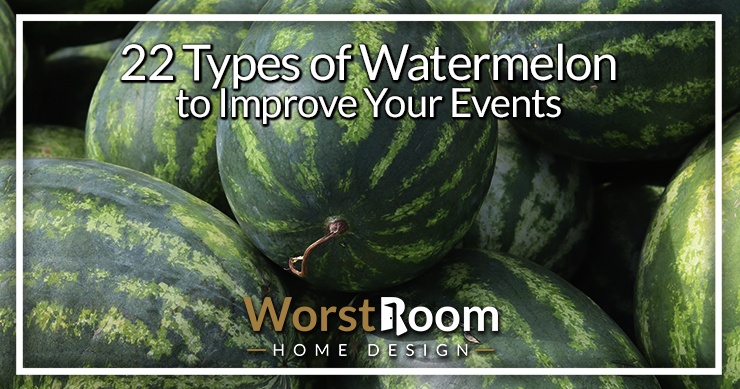
Watermelon is a favorite summer fruit. This delicious melon has earned its spot on the seasonal menu, whether you slice it up to enjoy in the sun or use it to flavor your favorite drink. With its vibrant color and unique flavor, this fruit is like a pearl in the jewel of fruits. There are many different types of watermelon with varying colors, weights, sizes, and tastes.
22 Types of Watermelon
Some might look similar, but be assured that they're all different from one another in special ways. There are four main types we cover, with some sub-types in each category, which are: icebox, picnic, yellow-fleshed, and seedless. After this if you're still excited you can explore all the types of melons in general, too.
Icebox Watermelons
At full maturity, these little fellows can weigh anywhere from six to fifteen pounds. They're small enough to fit in your fridge, where they get their name—they were literally kept in iceboxes to keep them fresh. These are suitable for gardeners who cultivate seasonally or have short space. They'll feed less people than the typical picnic watermelon, which are much larger.
Sweet Beauty
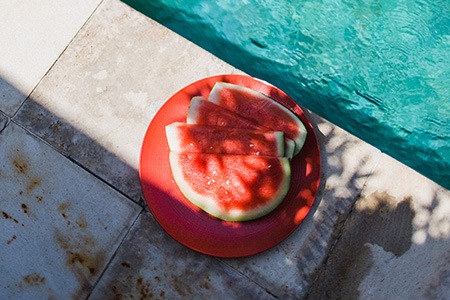
The smaller icebox variety has an incredible eating quality that's as sweet as its name. These fruits are truly a sight to behold at six to seven pounds each.
With dark green stripes that fade into light green, they're truly unique. Besides, it's deep red flesh and crisp yet juicy without being too juicy. Such gorgeous plants have vines that can reach eight to ten feet and are ready for harvest in just 77 to 80 days.
Yellow Doll
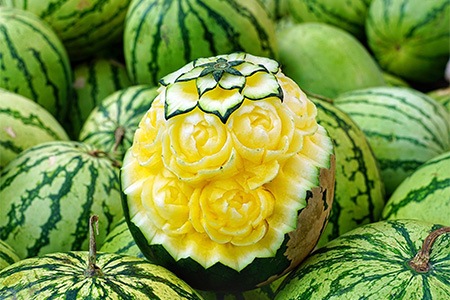
Don't let this fruit's cute, round-ish shape fool you. This different watermelon is known to weigh between five and seven pounds — a summer snack that's perfect for the whole family. Early-maturing and ready to be picked in just 65-75 days, these watermelons are ideal for short-season gardeners.
Sugar Baby Watermelons
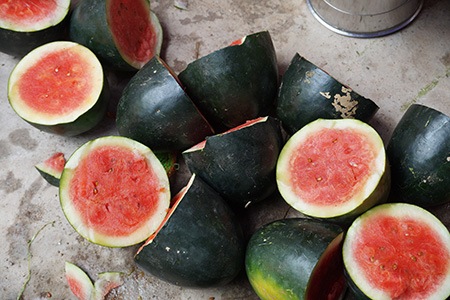
This round fruit can grow to a maximum diameter of 8 inches, weighing 8 to 10 pounds. When it comes to sugar content, this watermelon has the highest sugar, making it the sweetest one.
Its flesh has a vibrant red color with tan-brown seeds, while the outside of its skin is dark green with barely perceptible pale green veins that glisten in the sun.
These types of watermelon grow superbly in moist soil, so you'll want to ensure that the soil is well-drained and purely organic. That's why drip irrigation systems are great for these plants. They work best at ensuring the soil is constantly wet but not sopping wet.
Blacktail Mountain
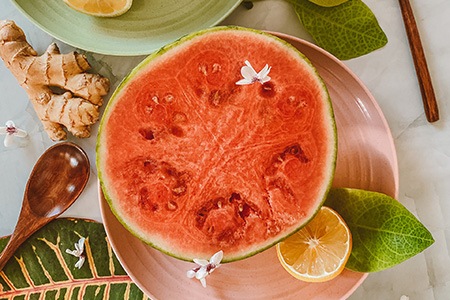
The blacktail mountain watermelon varieties can be quite the treat, maxing around 15 pounds in weight. They come in the spherical shape and have the typical red, sweet flesh we expect with the same darker green rind on the outside.
They grow well in areas where the temperature can drop very low, to even below freezing, at night time. So if you are going to have an early frost or live up north and still want watermelon during the spring and summer, this is a good choice, though I would pick them before it freezes, personally.
Tiger Baby Watermelons
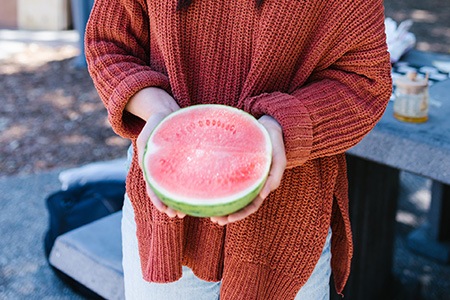
Tiger Baby watermelon is for those who want an especially sweet flesh on those hot summer days. The red meat on the inside tends to have a higher sugar content than other types of watermelons.
The name comes from the brighter green stripes running across the darker green peel on the outside, that some feel resembles that of a tiger. You can expect these watermelon types to grow up to 1.5 feet in diameter earlier than others, which is a specialty of this cultivar and makes for some really fun backyard farming.
They don't fare well during a freeze, not even the vines, so don't plant them too early. They do best in the USDA hardiness zones of 4 through 9 in Ph balanced soil. Give the vines full sun, plenty of water, and about 80 days before they're ready to be picked.
Picnic Watermelons
Picnic is the perfect watermelon for your next picnic gathering. It's large in size, from 16 to 45 pounds (7-20 kg.), and it comes in various colors. It's the perfect addition to any summertime get-together.
What makes this special is its oblong shape and sweet red flesh, along with a green rind. It can mature at around 85 days or so.
Crimson Sweet
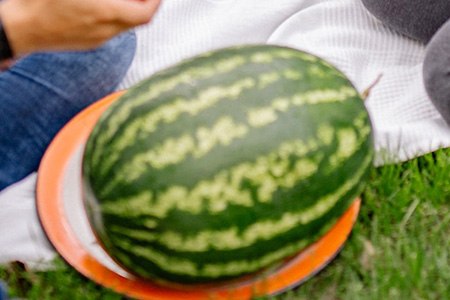
The Crimson Sweet watermelon has high sugar content, which means it's sweet and delicious! It's easy to care for, making it an excellent choice for people who are new to gardening.
These types of watermelon are a high-yielding cultivar with huge green-striped melons and rich red flesh. The Crimson Sweet can weigh between 20 and 25 pounds when it's ready to harvest in 80-90 days.
Allsweet Watermelon
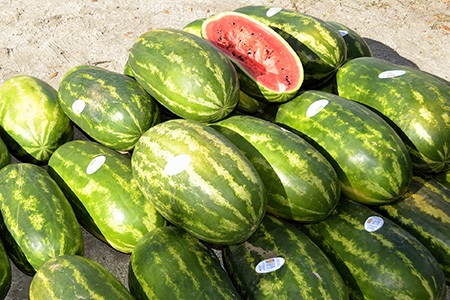
This watermelon is ready to harvest in 90 to 100 days and is the perfect size for an average family. You can expect an average of 25-30 pounds per watermelon.
Allsweet watermelons are an excellent choice for gardeners who want to grow their food organically. Not only that, but this variety also is highly disease-resistant.
Jubilee Watermelon
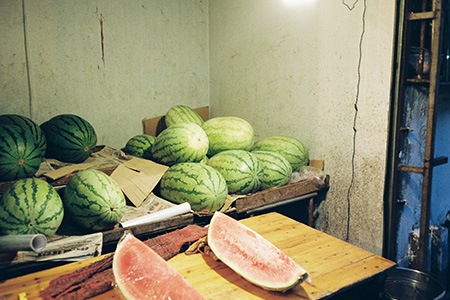
The Jubilee watermelon is a beauty to behold. This melon has a beautiful shape—it's elongated. Plus, it boasts a bright green rind with dark contrasting green stripes. Even the flesh is rich and bright red.
It often weighs 40 pounds or more. More importantly, this plant takes 95 to 110 days to mature and is exceptionally disease-resistant.
Charleston Gray
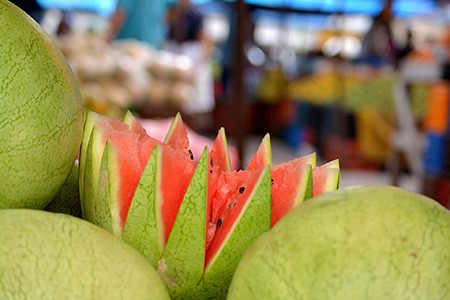
When you're looking for a watermelon that's big, juicy, and delicious, the Charleston Gray is the one. This sweet melon measures around 25-30 pounds and takes about 85 to 100 days to mature.
These melons have a bright red flesh and smooth yet crisp texture, but they also have a grey-green color rind that gives them a unique appearance. It is exceptionally resistant to fusarium wilt, which makes it easy to grow and harvest.
Georgia Rattlesnake Watermelon
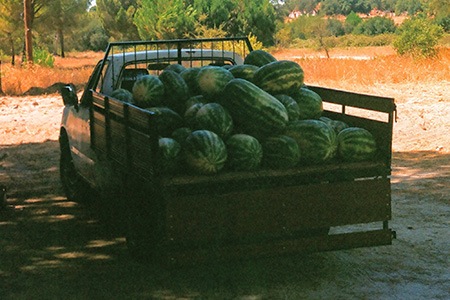
The Georgia Rattlesnake varieties of watermelon are large and oblong fruits that are light green on the outside with dark green striping. These melons can grow up to 24 inches long on average.
Nevertheless, they weigh as much as 30 pounds when fully matured. When a Georgia Rattlesnake watermelon is ripe, its flesh will turn bright pink along with a rind that has a thin texture. And these watermelons grow in 90 days. The pink flesh almost looks like types of guava if you didn't know better.
Sweet Princess
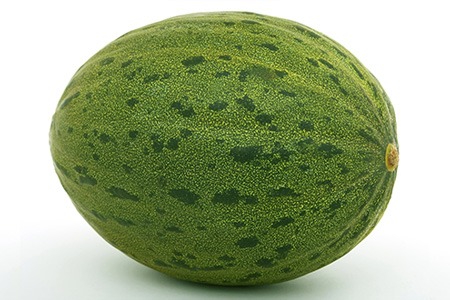
It's an open-pollinated heritage cultivar that produces 20–30-pound oblong fruits. It can be cultivated without being concerned about the disease since it strongly resists anthracnose and fusarium wilt.
Plus, these types of watermelon can be harvested in 85-95 days, so you won't have to wait long. The rind of the Sweet Princess is light green by dark green marking and is thin but robust.
This watermelon got pink flesh that is crisp and delicious. It has a smooth texture and tiny tan seeds. In addition, these watermelons have a 15-inch length and an 8-inch width.
Black Diamond
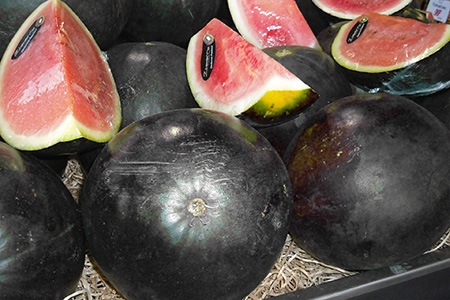
Black Diamond watermelon plants start off like all others, but with particularly vigorously growing vines. You have to give these a much longer growing season because the melons can grow up to 50 pounds in weight! Expect at least 3 months of growing before the fruits are ripe.
These are massive, and their rinds are tough to cut through, but once you manage it you'll expose the delicious pinkish red flesh on the inside which is plenty sweet enough. These heirloom watermelons are particularly interesting due to their open-pollinated attributes and their size.
Make sure they get around 8 hours of full sun every day, and only plant them after the soil temperatures have reached an average of 70 degrees Fahrenheit. Make sure there will be no more frosts, as well, or you may sabotage your efforts.
Orange, Yellow, & White Flesh Watermelons
While I'm sure you've heard of the color green, it might not have occurred to you that watermelon can be any other rainbow color. But it can with the following different kinds of watermelon! Yellow-orange look very surprising compared to seedless, picnic, and icebox watermelons.
So, if you're looking to add some new color to your fruit bowl this summer, here are some uniquely colored melons to consider.
Orange Tendersweet
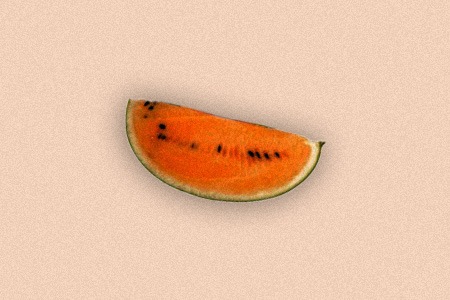
Its bright orange flesh is juicy, sweet, and tender to the bite. Plus, it has an attractive oblong shape that's easy to cut into. When fully ripe, it will weigh between 30 and 50 pounds.
These watermelons have strong rinds with pale and dark green striping. These plants may grow up to 15 to 24 inches tall, with a spreading of 72 to 96 inches.
You can expect harvestable fruits from them within 90 days. And one important tip, you better save the seeds for next year as they're open-pollinated.
Orange Crisp Watermelon
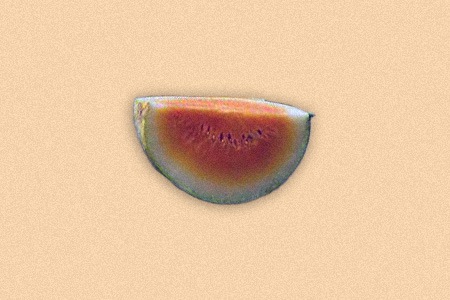
It's a hybrid watermelon that comes with deep orange flesh that is sweet and crisp. It is round to oval-shaped and weighs 17-19 pounds when ripe. The 11-inch-diameter fruits feature pale green skin and darker green stripes.
The Orange Crisp types of watermelon is a must-have for gardeners since it produces a lot of watermelons that can withstand hollow hearts and sunburn. In around 87 days, these tiny orange beauties will be ready for harvesting.
For the best fruit production, plant 'Orange Crisp' watermelon with a seeded pollinator cultivar like 'Charleston Gray.'
Gold in Gold Watermelon
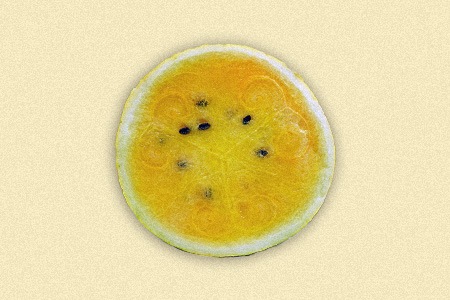
This variety has flesh that is golden in color and a dual-toned yellow-and-gold rind. Gold in Gold is a hybrid, yellow-fleshed watermelon that is the winner of the 2017 All-America Selections.
The sweet golden flesh of Gold in Gold watermelons has a pleasantly crisp texture. The rinds are thin but strong—no cracking here! It's resistant to the most common diseases like powdery mildew and fusarium wilt.
Like a little slice of summer in your fridge, Gold in Gold Watermelon is a perfectly-shaped oval that weighs 11 to 16 pounds when ripe. The vines can reach a height of 20 inches and a spread of up to 10 feet. These golden fruits are ready to harvest in just 80-84 days.
Desert King
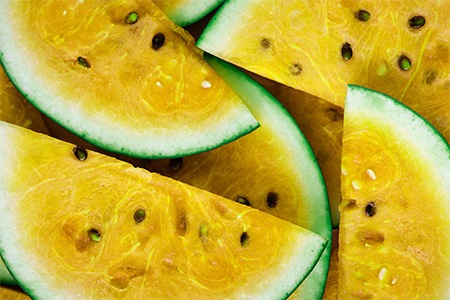
The Desert King watermelon could surprise you when you first cut it open. It's a round melon instead of oblong, and it fares well in areas that may not see much rain. It's drought tolerant so if you forget to water them, it's not going to be that big of a deal.
The Desert King is a member of the citrullus family, called citrullus lanatus. The rind has a lighter green shade on average, akin to the color of sweet peas on the lighter areas. It's the flesh that is so surprising on this different watermelon.
The inside flesh has a lot of seeds, which really stand out f rom the bright yellow flesh they reside in. Sometimes this flesh will tend towards the orange shades, too. They can grow up to 20 pounds in weight and can hold for around a month after harvested, so don't feel too much of a rush on eating them.
Tendergold
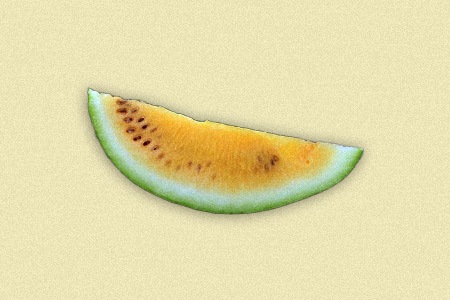
Tendergold watermelons are heirloom watermelons, pollinated by air and insect as usual. Sometimes people call these Willhites Tendergold watermelons. They melons are relatively medium in size that have a sweet flavored yellow flesh.
This flesh will become darker as the fruit becomes more ripe, which helps you gauge how long to let the rest continue growing. They have the typical green rind with lighter green stripes running around them.
Yellow Baby
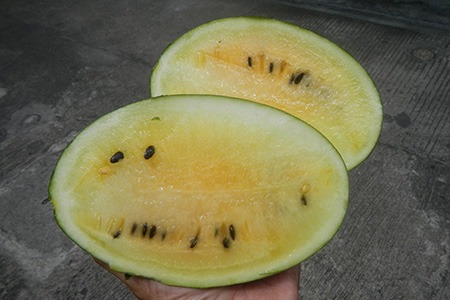
Yellow Baby types of watermelon has an accurate name. They're not extremely popluar for several reasons. These include the yellow flesh, the higher than average seed count, and that they grow smaller in size (around 8 to 10 pounds in weight).
The most interesting thing about these is Chen Wen-yu, the Taiwanese horticulturalist who developed these types of watermelons and around 280 other varieties as well. They say that by the end of his life in 2012 his work was responsible for the dissemination of at least a quarter of all the watermelon seeds worldwide.
Seedless Watermelons
If you have never tried a seedless watermelon before, you should definitely try it. Seedless melons are popular because they allow people to eat them whole without having to worry about getting seeds lodged in their teeth. Explore the Queen of Hearts, Jack of Hearts, Trio, and Nova watermelons, too.
Mini Piccolo
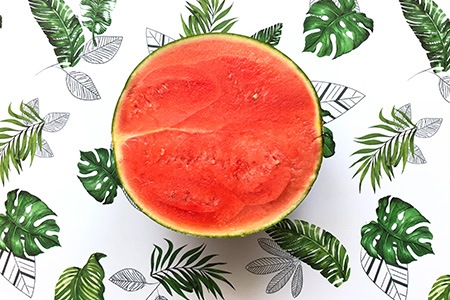
This seedless hybrid variety is available in single-serving sizes that are easy to eat and won't weigh you down. A tiny, spherical fruit, the Mini Piccolo Watermelon has green skin with deeper green stripes.
This fruit is about two to four pounds in weight and is ideal for parties or friend gatherings. They are packed with red flesh that is super-sweet and juicy.
It's only 14 inches tall, so it won't take up too much space in your garden. These plants can produce up to six fruits each and have a 10-foot spread, so they'll grow big enough to be worth the effort.
To grow the best' Mini Piccolo' watermelons possible, plant them alongside another seeded pollinator variety, such as 'Crimson Sweet.' They'll be ready to harvest in 80 and 83 days.
Big Tasty Watermelon
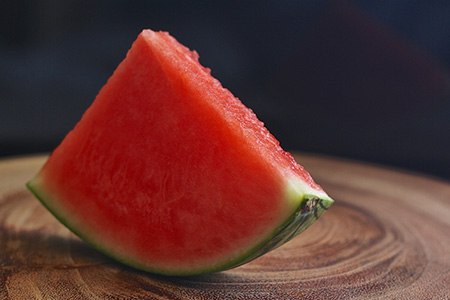
These seedless hybrid varieties of watermelon boast a prominent flavor in a tiny package. At six to eight pounds each, 'Big Tasty' melons are ready for harvest when they reach about 10-12 inches in diameter.
Their bright red flesh is bursting with flavor, and the pale gray-green skin is crisp and firm. This plant will grow 15 to 24-inches tall and spread 60 to 72-inches wide. And don't worry about the harvest, it'll be ready in just 85 days. Furthermore, you'll need to plant this seedless variety with a seeded pollinator cultivar.
King of Hearts
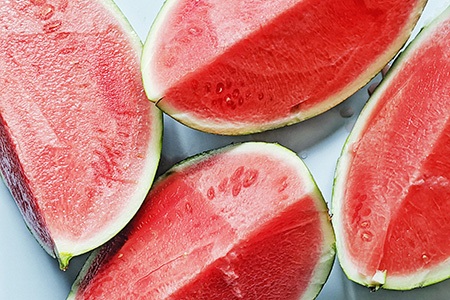
King of Hearts watermelon was created on Mercer Island, Washington in the United States. It's a long vine melon, meaning it needs a generous amount of space to thrive. Being one of the seedless types of watermelon is convenient and are just as sweet as any other.
Weighing in around 15 pounds on average, they provide plenty of flesh to enjoy and aren't so heavy you can't easily deal with them when it comes time to slice them up. They do call this a seedless watermelon, but you'll find that the soft, white seeds are present that are easily chewable.
Millionaire Watermelon
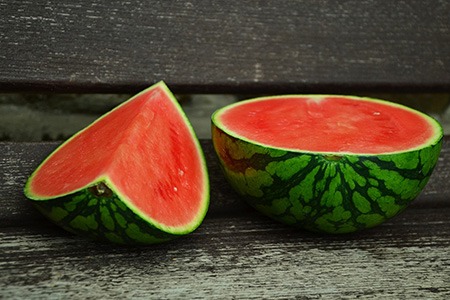
Another of the seedless watermelon varieties is the Millionaire. It's a hybrid watermelon that doesn't produce any seeds of its own. It'll weight around 20 pounds usually with a lighter red flesh that some see as dark pink at times.
They have a very firm or even hard rind on them, which makes them a good choice for being shipped around and placed in farmer's markets or grocery stores. They take around 90 days to mature so be patient.
Other Types of Watermelon to Explore
You may want to explore further, so here's a quick list of some other semi-popular watermelon options you can try to get ahold of, including the type they fall under. We're adding Personal Watermelons and Giant Watermelons (which are just relatively small and big, respectively, in size):
- Klondike Blue Ribbon Striped (Picnic)
- Golden Midget (Personal)
- Mini Love (Personal)
- Little Darling (Personal)
- Black Diamond Yellow Belly (Giant)
- Florida Giant (Giant)
- Carolina Cross #183 (Giant)
- Triple Crown (Seedless)
- Orangeglo (Orange/Yellow/White)
- Mountain Sweet Yellow (Orange/Yellow/White)
- Cream of Saskatchewan (Orange/Yellow/White)
- Yellow Petite (Orange/Yellow/White)
This list and those watermelon types above should keep you going for a lifetime of sourcing, eating, and growing more in your own garden at home. Have fun!
5 Ways to Recognize a Ripe Watermelon
Knowing which watermelon is ripe and sweet is a big part of the enjoyment. Here's how to pick them:
- Yellow Patches - You want to see yellow (called a field spot) and not pale white or green patches along the rind, which would mean they were picked off the vine too soon.
- Dark & Dull Rinds - If the rind is shiny and paler in its shades of color, it's not ripe yet.
- Heavy Equals Sweet - Compared to similar sized watermelons, a heavier weight will mean it's going to have a sweeter flesh on the inside.
- The Hollow Knock Test - If you knock and you hear a hollow sound, that means the flesh will be crispy instead of soft, which is preferable
- Solid & Firm Rinds - Avoid any watermelon that has soft spots. Squishy means it's either not ripe yet or too old.
Follow these five tips and you'll get the most delectable watermelon for you and your friends and family.
Types of Watermelon to Cool Down Every Summer Event
Hopefully, this article has shown you that many different kinds of watermelon are out there! That's a crazy amount of variety, and all of these different types do have their own unique flavors and hues.
So, if you're going to eat some watermelon in the coming season – try one of the different types of watermelon discussed in this article. After all, a walk over to the fruit stand may just reveal your new favorite watermelon.




